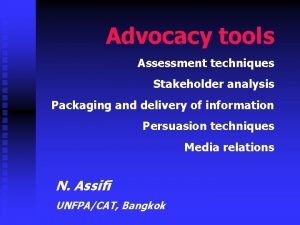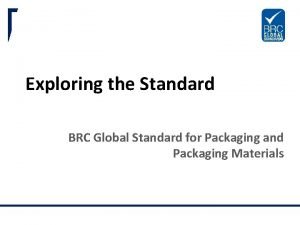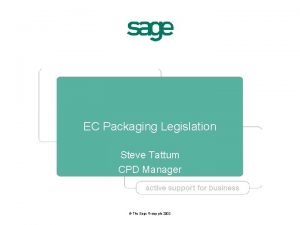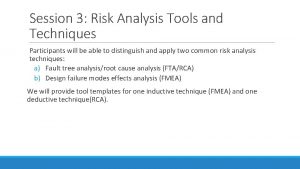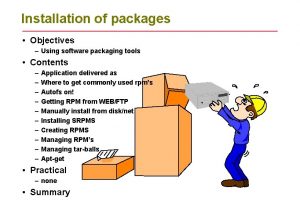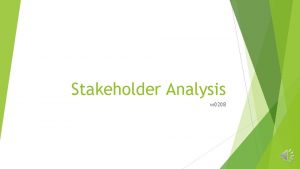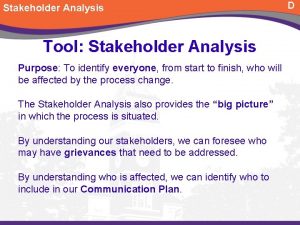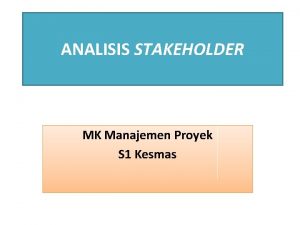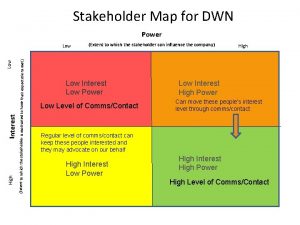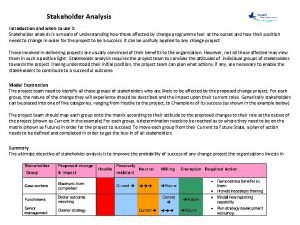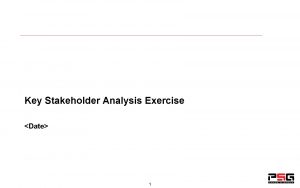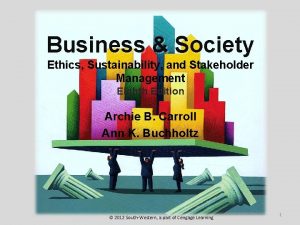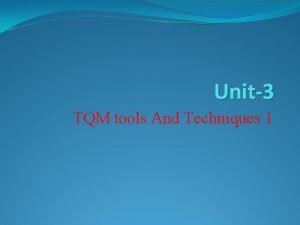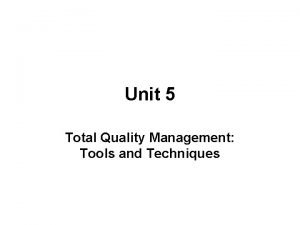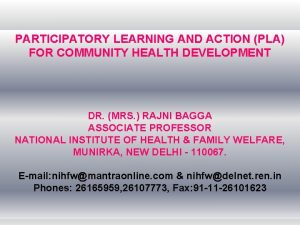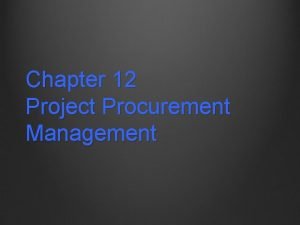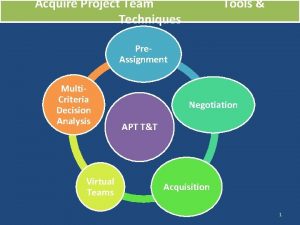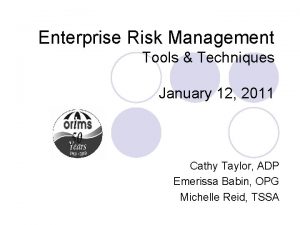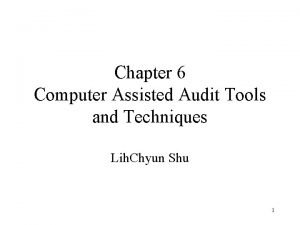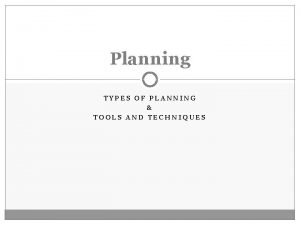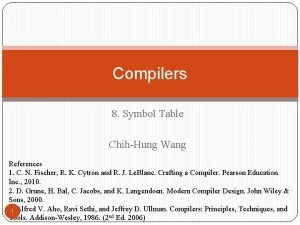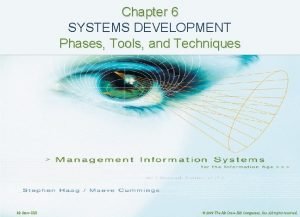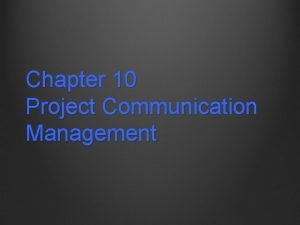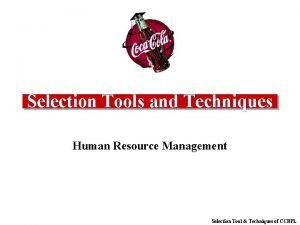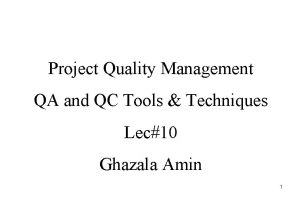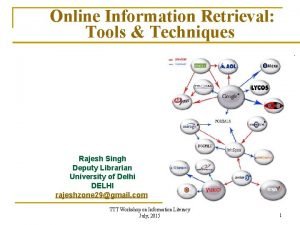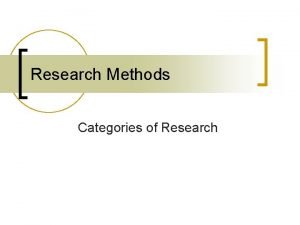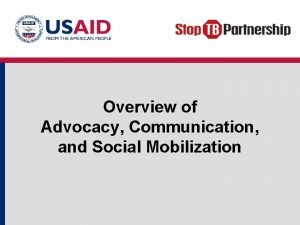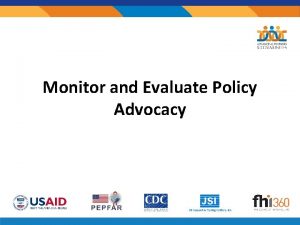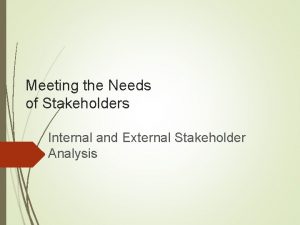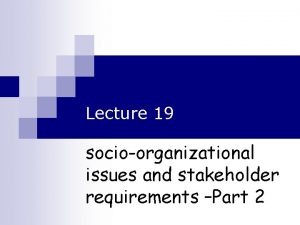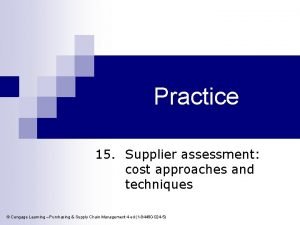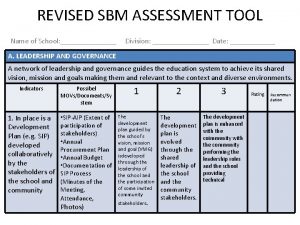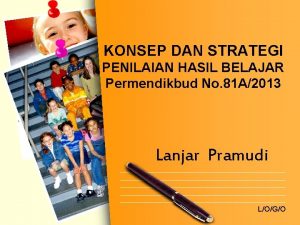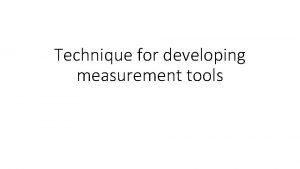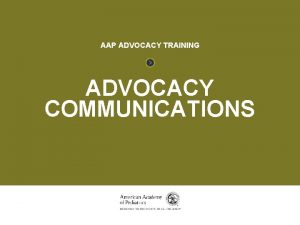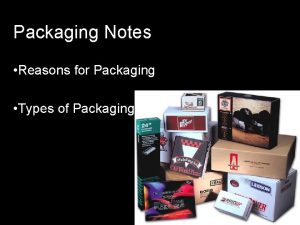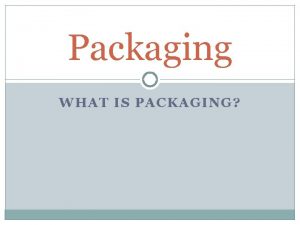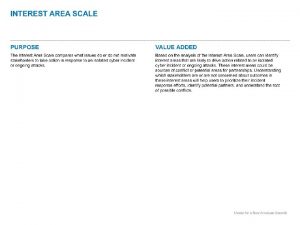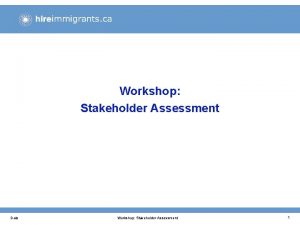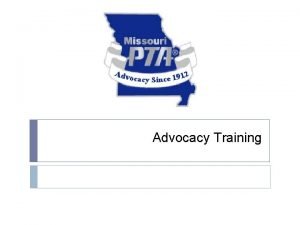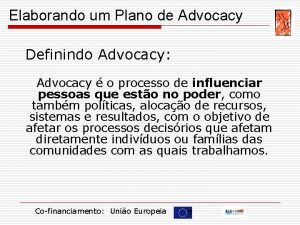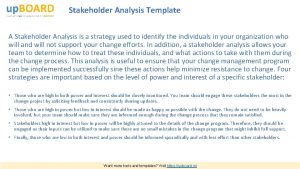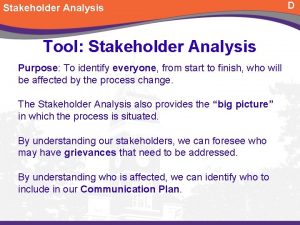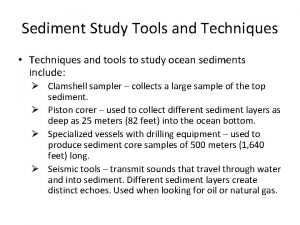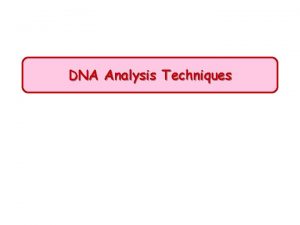Advocacy tools Assessment techniques Stakeholder analysis Packaging and



















































- Slides: 51

Advocacy tools Assessment techniques Stakeholder analysis Packaging and delivery of information Persuasion techniques Media relations N. Assifi UNFPA/CAT, Bangkok

Assessment techniques Needs assessment helps identify and measure gaps between what is and what ought to be. The needs assessment process includes: 1 Gathering data 2 Analyzing the data 3 Establishing priorities for addressing the needs

Methods for assessing needs Demographic data Focus group Utilization data Small area analysis Use of key informants Community forum Community survey Needs Direct observation Survey and pools Individual interview

Advocacy Tools Stakeholder Analysis

Stakeholders Analysis Who are the stakeholders of advocacy? • Decision makers • Allies and partners • Resistant groups (Adversaries)

Stakeholders Analysis… Decision makers • Size, (number), location, sex etc. • Knowledge about the advocacy issue • Channels for reaching the decision maker • Special skills i. e. good speaker, good negotiators • Political standing of the decision maker on the issue • Is the decision maker supporting the issue? If not, why? • Is the decision maker willing to speak in support of the issue in public or through mass media?

Stakeholders Analysis… Allies and partners • Size, (number), location, sex etc. • Knowledge about the advocacy issue • Networks, size of population covered • Special strengths i. e. media relations, community mobilization • Past experience , expertise in the area of advocacy • Willingness to share experience, expertise, resources • Expectations from joining the partnership

Stakeholders Analysis… Resistant group (adversaries) • Size, (number), location, sex etc. • Knowledge about the advocacy issue • Reason for resistant/opposition • How to reach the opposition group? • Whom they consult or get advice from?

Advocacy Tools Packaging and Delivery of Advocacy Messages

Advocacy Message: What it is. n It is a short, concise and persuasive statement. n It relates to your goal and sums up what you want to achieve. n Its purpose: to create action you would like your audience to take.

Key Parts of an Advocacy Message n What is the issue or problem? n How big is the issue or how serious is the problem. n What is the adverse effect of the problem on a particular group of people? n What can stakeholders do to solve the problem?

Key Parts of an Advocacy Message What is the issue or problem? Example: “High rate of teenage pregnancy in South-East Asia”

Key Parts of an Advocacy Message How big is the issue or how serious is the problem? Example: Between 1 to 1. 4 million adolescent women have abortions in developing countries each year. About half of adolescents interviewed considered premarital sex as normal behaviour and 23% of 1319 year old adolescents reported to be sexually active (Malaysia, 1994 -95). In Indonesia, 28. 8% of newly married couples had engaged in premarital sex (University of Islam Indonesia in Yogyakarta). Of these women, 12. 6% were pregnant before their marriage. 18% (2. 5 million) of Filipinos aged 15 -24 have engaged in premarital sex. 74% of these do not use any method to prevent pregnancy

Key Parts of an Advocacy Message What is the adverse effect of the problem on a particular group of people? Example: Pregnant adolescents may be denied important opportunities such as education, employment and consequently, better quality of life. For young men, early fatherhood can also disrupt educational plans and increase economic responsibilities.

Key Parts of an Advocacy Message What stakeholders do to reduce teenage pregnancy? Example: n n n Promulgation of laws/policies on incorporation of sexuality education in the school curriculum Allocation of resources for establishing counselling services for adolescent on ARH issues Policies to increase accessibility of information and contraceptive for adolescents.

SEE Approach to Message Design S Write a simple STATEMENT E Provide EVIDENCE with facts E Give EXAMPLE with a story or analogy

Advocacy message styles • Emotional Vs Rational Appeals • Positive Vs Negative Appeals • Mass Vs Individual Appeals • Definite Conclusion Vs Open Conclusion • Repetitive Vs One time Appeals

Packaging the Message n Presentation is key to message delivery. n A successful presentation is appealing and attractive. n Packaging includes print, audio or audio-visual materials. n Support packaging with simple illustrations, graphs and photos.

Packaging materials for different target groups 1. Issue/Problem 2. Size of issue or problem 3. Effects 4. Action Message for Decisionmakers Message for Partners and Allies Message for Resistant Groups

Advocacy Tools Persuasion Techniques

Persuasion techniques • Informing/sensitizing • Making presentation • Lobbying • Petitioning • Pressuring • Negotiating (conflict resolution) • Debating

Informing/sensitizing Informing Sensitizing Introducing a topic or a problem Presenting issues scrounging the topic Methods • Presentation • Seminar • Radio/television/print • Conference • Poster, leaflet • Meetings

Making Presentation is: Expressing ideas, presenting information and arousing feelings compelling the listeners to further inquiry and thought

Making Presentation To be an effective presenter, you must have a balance between knowledge of subject and skills in organization and presentation. Knowledge of a subject can hardly be overemphasized, yet knowledge without skills in presentation accomplishes little.

Analyzing the Presentation Occasion Ø What is the purpose of the occasion? Ø What is the likely size of the audience? Ø What physical conditions will prevail?

Analyzing the Audience Ø Determine audience interests § Primary interest § Secondary interests § Momentary interests ØDetermine audience attitude towards the subject § Favorable attitude § Hostile attitude § Apathetic attitude Ø Determine facts about the audience § Age § Sex § Education, Knowledge § Occupation § Social status/ background

Selection, Sequencing and Classification of the Content 1. Selecting a Title • • Select a title in keeping with occasion Select a title applicable to your subject Select a provocative title Select a brief title 2. Sources of Materials • Your own experience • Other people “experts” experience-interview • Printed materials • Mass media, INTERNET • Observation of a process, activity, etc.

Selection… 3 Selection of Content • • • Is the content in keeping with the intellectual capacity of your audience? Is the content adapted to your time limit? Is the content appropriate for the size of your audience and the prevailing physical conditions? 4. Sequencing Content • • Logical order Problem-centred order Simple to complex order Job performance order

Identifying Support Materials Definitions n Visual aids n Accurate and effective use of statistics n Effective use of examples n Effective use of testimony n Repetition and restatement n

Introduction • To create favorable atmosphere for the presentation • To stimulate interest in the subject • Clarify and partition the topics The body of the Presentation • Develop the central idea • Develop main divisions, subdivisions and organizational pattern Organizing the Presentation Support the Issues Explanation Statistics Examples Testimony The Conclusion

Preparing for Delivery Rehearsing n Reading from manuscript n u u u Official statements Research reports Speeches prepared for radio Speaking from memory n Speaking with help of presentation notes n Speaking with help of an outline n Effective use of microphone n

Presentation Notes MORE THAN 50% OF THE WORLD IS BELOW THE AGE OF 25 OF WHOM MORE THA 80% LIVE IN DEVELOPING COUNTRIES. THE LESS ECONOMICALLY DEVELOPED THE COUNTRY, THE YOUNGER THE POPULATION. FOR EXAMPLE, IN KENYA, 70% OF THE POPULATION IS UNDER 25 AS COMPARED WITH 34% IN THE UNITED KINGDOM. ABOUT ONE FIFTH OF THE PEOPLE OF THE WORLD, MORE THAN ONE BILLION, ARE ADOLESCENT. THE WORLD IS RAPIDLY URBANIZING. IN 1950, 17% OF PEOPLE IN DEVELOPING COUNTRIES LIVED IN URBAN AREAS. BY THE YEAR 2000 THE FIGURE IS EXPECTED TO BE OVER 45%, AN INCREASE OF MORE THAN 250%, AND STILL ACCELERTING.

Presentation Notes More than 50% of the world is below the age of 25, of whom more than 80% live in developing countries. The less economically developed the country, the younger the population. For example, in Kenya 70% of the population is under 25 as compared with 34% in the United Kingdom. About one fifth of the people of the world, more than one billion, are adolescent. The world is rapidly urbanizing, In 1950, 17% of people in developing countries lived in urban areas.

Tips for Effective Presentation n n n n You may need to be more enthusiastic about the subject. You cannot expect audience interest unless you show enthusiasm yourself. You may need to change the rate, volume or pitch of your voice. A monotonous presentation invites inattention. Make your materials more interesting by relating it to the interests of your listeners. You may need to define and explain technical term or be less abstract. You may need to use bodily action to help express yourself. Using the language accurately and effectively. Developing an adequate speaking voice. Analyzing audience reaction.

Political lobbying It is a technique of advocacy involving repeated, meetings, office calls, letters, media interventions to achieve public policy goals Political lobbying often target one or a small group of political leaders

Political lobbying It is used to achieve public policy goals Points to remember • It is more effective when there is a need for something specific from the legislative system • Identify the key parliamentarians you want to reach, be they individuals or a committee dealing with the issue • Be focused. Stick to just one issue for each communication

Political lobbying… Points to remember • Find out the parliamentarian’s position and background on the issue • Make a personal connection. If you have a colleague or friend in common with the parliamentarians, let him/her know about it • Tell the truth. Giving false or misleading information is counter productive • Lobbying needs to be carried out continuously over a period of time

Petitioning • It is a written and formal way of making your point • Represents a collective perspective, and not just that of individuals and a particular group • It is a very short and clear statement on what the issue is and what action needs to be taken followed by names and addresses of a large number of individuals who support those statements

Negotiating Negotiation helps to develop mutually beneficial solutions in situation of conflict. Ways of coping with conflict Competition Compromise Collaboration Accommodation Avoidance

Negotiation skills Three key elements of negotiation Listening • Attentively • Acceptably • Assistingly • Alertly • Actively • Respectfully Observing Telling • Fully • By using simple, nonthreatening words • Tactfully • Empathetically • By saying and using words that the listener • Objectively wants to hear • By avoiding objection words • By using visual materials • By being accurate and complete • By being considerate

Negotiation skills… The negotiator must be in SHAPE S Sincere/Sensitive H Honest/Humorous A Attentive/Articulate P Proficient E Enthusiastic/Emphatic

Debating • It is used when there are two or more differing opinions about a particular issue • It is an opportunity to highlight the positive and negatives aspects of all the opinions • There is a moderator who leads the discussion and controls the amount to time each persons is permitted to speak • Each person in the debate is given the opportunity to speak in the beginning, and than questions are asked by the moderator or by the audience

Techniques and Tactics Advocacy techniques and tactics Sensitization Mobilization Dialoguing Debating Negotiating Lobbying Petitioning Pressuring Audience/Stakeholder Category Beneficiaries Partners Adversaries Decisionmake rs

Advocacy tools Media Relations

How to involve media? • Establish personal relation • Letters, telephone calls, office calls • Invitation to high profile events • Orientation seminars • In-country site visits • Arranging interviews with high-profile people • Regular dissemination of up-to-date information/data

Features of a story that attracts media 1. 2. 3. 4. 5. 6. 7. 8. 9. Issues that are controversial, sensational, moving or inspiring New discoveries, new ideas, inventions (especially when they affect lots of people directly) Events dealing with competition, challenges etc Miscarriage of justice, unfair decisions etc Unusual or odd events Celebrities

Message formats for media • Press release • Fact sheets/ background sheets • Press kit/media packets • Press conference • Editorials • Letters to editor

Press Releases n n n Keep the press release brief – two pages at most. However, make sure it has all the facts with the main point in the lead paragraph and headline. Begin your article with a dramatic statement. Write simply. Ex. : “More than 15 Million girls aged 15 -19 give birth each year with a risk of maternal mortality and morbidity, including infection from HIV/AIDS. ”

Press Releases n n n Send your press release using your letterhead with “Press Release” printed on it. Always include the Contact Person and contact number for verification. Accompany your press release with a photograph.

Fact Sheet 1. Divide the subject matter into small bite-size sub-topics for easy understanding 2. Discuss one sub-topic at a time. 3. Keep the multiple uses of a fact sheet in mind (as a press release, a teaching material, part of a press kit) 4. Support your information with simple charts, graphics, photos, statistics, tables 5. Write simply: use simple language

Press kit It is a compilation of facts, data, examples, case studies, illustrations, photos, video tapes etc. to give journalists easy access to facts and information on a given subject.
 Packaging and delivery of information in advocacy
Packaging and delivery of information in advocacy Brc packaging
Brc packaging Steve tattum
Steve tattum Techniques of advocacy
Techniques of advocacy Risk analysis tools and techniques
Risk analysis tools and techniques Strategic analysis tools and techniques
Strategic analysis tools and techniques Software packaging tools
Software packaging tools Dormant stakeholder
Dormant stakeholder Mendelow 1991 stakeholder mapping
Mendelow 1991 stakeholder mapping Eksempelet
Eksempelet Stakeholder analysis template
Stakeholder analysis template Stakeholder mapping contoh
Stakeholder mapping contoh Power and influence mapping
Power and influence mapping Stakeholder analysis exercise
Stakeholder analysis exercise Stakeholder analysis exercise
Stakeholder analysis exercise What are structured analysis tools
What are structured analysis tools Business and society ethics and stakeholder management
Business and society ethics and stakeholder management Fmea in tqm
Fmea in tqm Tools and techniques of quality management
Tools and techniques of quality management Software quality assurance tools and techniques
Software quality assurance tools and techniques Cost management pmp
Cost management pmp Pla tools and techniques
Pla tools and techniques Data collection in legal research
Data collection in legal research Procurement project management
Procurement project management Pre assignment project management
Pre assignment project management Erm tools and techniques
Erm tools and techniques It audit tools and techniques
It audit tools and techniques Types of planning tools
Types of planning tools Symbol table implementation in lex and yacc
Symbol table implementation in lex and yacc Planning techniques and tools
Planning techniques and tools System development tools and techniques
System development tools and techniques Monitor communications process tools and techniques
Monitor communications process tools and techniques Selection tools in management
Selection tools in management Qa tools and techniques
Qa tools and techniques Quality management tools
Quality management tools Examples of information retrieval tools
Examples of information retrieval tools What is a strategic plan
What is a strategic plan Change management tools and techniques
Change management tools and techniques Advocacy and participatory worldview
Advocacy and participatory worldview Advocacy goals and objectives examples
Advocacy goals and objectives examples Advocacy communication and social mobilization
Advocacy communication and social mobilization Monitoring and evaluation in advocacy
Monitoring and evaluation in advocacy Tracy blanchard lsu
Tracy blanchard lsu Stakeholder internal and external
Stakeholder internal and external Catwoen
Catwoen Supplier evaluation techniques
Supplier evaluation techniques Revised sbm assessment tool
Revised sbm assessment tool Strategi penilaian
Strategi penilaian Fonctions et solutions techniques
Fonctions et solutions techniques Technique of developing measurement tool involves
Technique of developing measurement tool involves Tools of quantitative techniques
Tools of quantitative techniques Kanbar center
Kanbar center
